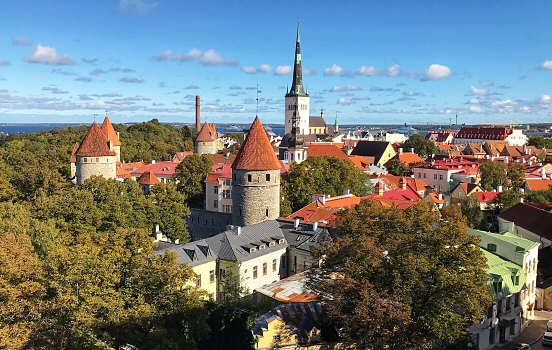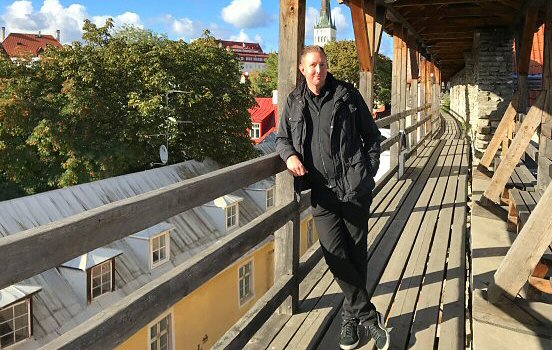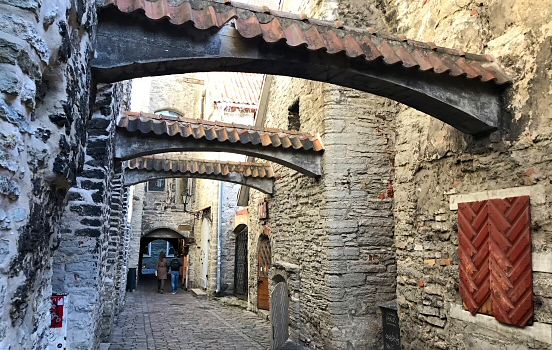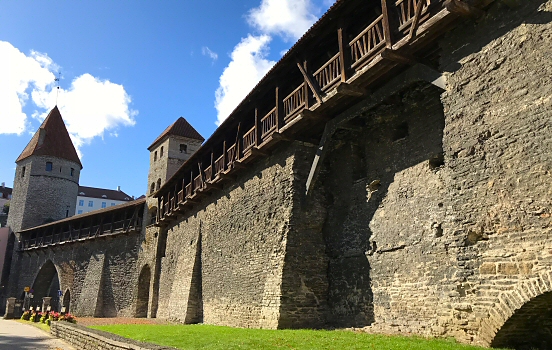Tallinn is a postcard wrapped in barbed wire. Picture-perfect medieval towers cast shadows on crumbling Soviet-era blocks. You sip your overpriced coffee in a fairy-tale square, while the KGB museum down the road reminds you that fairy tales often come with a body count.
This city, perched on the edge of the Baltic like a scarred old sea captain, has seen invaders come and go. Originally established in the 13th century by the knights of the Teutonic Order, Tallinn became a major center of the Hansa League. Traces of this age can also be found in the beautiful merchant houses with adorning guild shields.
 The defense towers can be seen from most parts of the town.
The defense towers can be seen from most parts of the town.
Today the old town of Tallinn is one of the best preserved medieval cities in Europe, surrounded by a massive wall from the medieval times. It feels good to be back and wander along the cobbled streets once more.
 Several hundred meters of the eastern wall are available for exploring.
Several hundred meters of the eastern wall are available for exploring.
Climb the steps to Toompea Hill and you’re rewarded not just with a view, but a perspective. Red-tiled roofs tumble down like drunken dominos toward the sea. Church bells echo against the modern skyline, a quiet reminder that Tallinn is a city constantly balancing its past and future.
When you get too much of the beautiful architecture and the feet need some rest, there is always the possibility to sneak into the Depeche Mode Baar for a black celebration, or perhaps grace the classic watering hole Hell Hunt with a visit.
 St. Catherine’s Passage is one of the most iconic alleys.
St. Catherine’s Passage is one of the most iconic alleys.
But step beyond the polished façade of the Old Town, and Tallinn starts to whisper stories of old. Tallinn’s real magic lives in its cracks. Every corner feels like it’s hiding something, usually a basement bar serving black bread or stale beer. There are also old-school places such as Valli, serving their signature poison Millimallikas (Sambuca, Tequilla and Tabasco), that hits like a punch from Ivan Drago.
 All along the watchtower.
All along the watchtower.
If you’re looking for a journey where Lenin once loomed and Instagrammers now pose, Tallinn’s got your number. Just don’t expect the past to stay buried.
Related posts

Comments
No comments yet.
Leave a reply